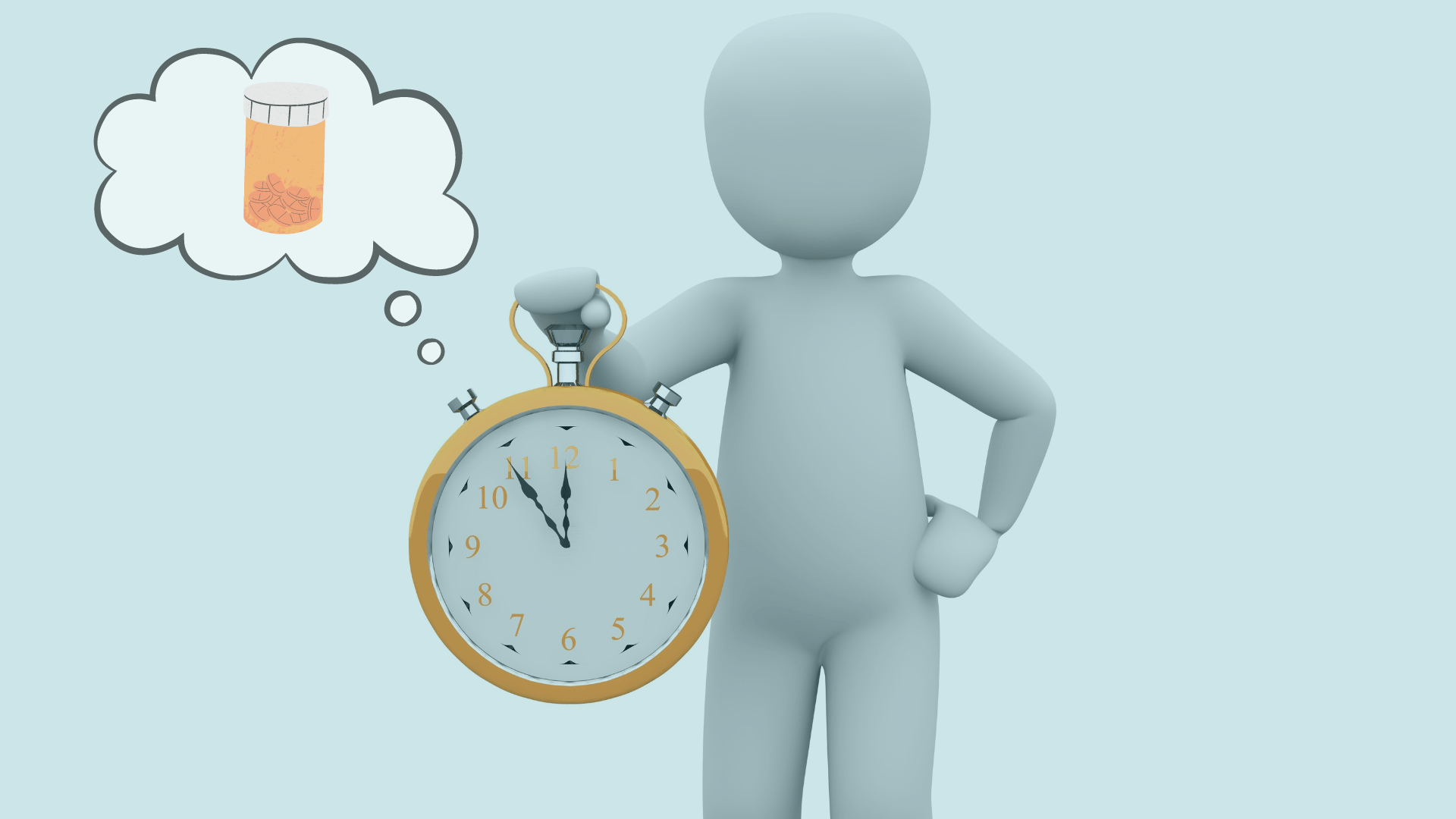How Long Does Codeine Stay In Your System? Drug Facts, Statistics, and Timelines

- Codeine is a prescription opioid medication meant to address mild to moderate pain.
- Codeine is also added to cough syrup as a short-term cough suppressant.
- Codeine effects can be felt within 1 hour and will stay in your system for up to 2 days.
- Some of codeine’s common side effects include constipation, while some of the more serious side effects include respiratory depression.
What is Codeine?
Codeine is a prescription opioid classified as a Schedule II controlled substance in the United States when found in certain formulations with a higher potential for abuse; however, it is also available in combination products that are classified as Schedule III or V, depending on the concentration of codeine. It is also the most commonly used opioid in the United States and worldwide.
While codeine may be perceived as less addictive relative to other opioids like Oxycodone or hydrocodone, it does carry a risk for abuse and dependence, and its medical uses are approved for specific conditions such as pain and cough suppression. In the US, you need a doctor’s prescription to possess it. The most common application of codeine is to treat chronic coughing.
Its antitussive properties are why almost all prescription cough syrups contain codeine. It’s been approved to treat mild to moderate pain.
Codeine is available in various forms, including oral solutions and tablets, with both immediate-release and controlled-release formulations; however, it is not commonly administered via intravenous injection. The tablets can be immediate-release (IR) or controlled-release (CR).
Codeine Mechanism of Action
Codeine is an opioid, and as such, it binds to the mu-opioid receptors inside the central nervous system.
Opioid receptors transmit the sensation of pain throughout the body. When codeine binds to them, the subjective sensation of pain is decreased but not entirely erased.[1] People who take morphine to alleviate mild to moderate pain should notice decreased pain.
It also affects the medulla oblongata, which is the region of your brain responsible for coughing. Coughing is usually a symptomatic behavior of an underlying problem, and once the problem is treated, the coughing usually goes away.
As such, codeine is useful for treating short-term coughing as the problems responsible for the cough are addressed. Scant literature exists on the efficacy of codeine to adequately address chronic, long-term coughing, possibly because codeine does not address the root problem that causes coughing in the first place.[2]
Metabolism and Metabolites
When a substance enters your body, it will get converted into energy through the process of metabolism. When a substance is metabolized, most of it will get converted into metabolites.
The main metabolite of codeine is morphine, and a secondary metabolite is norcodeine.
Individuals with a CYP2D6 genotype are ultra-rapid metabolizers and can overdose on FDA-approved therapeutic levels of codeine.[3] As such, if people are aware of this genotype, they are advised to take a different medication.
History of Codeine
Codeine is an alkaloid first isolated from opium in 1832 by Pierre Robiquet. The name comes from the Greek word “kodeia,” which means the head of the poppy plant.
While a method was invented in 1938 that allowed a narcotic like codeine to be synthesized from coal tar, today, codeine is produced by methylation of opium.[4] Today, codeine is most commonly added to prescription cough syrup with promethazine.[5] The codeine suppresses the cough reflex, while the promethazine suppresses nausea.
While the WHO says codeine is the most common opioid used worldwide, in 2011, it removed codeine from the list of essential medicines for children to send a message to physicians worldwide to prescribe codeine with utmost caution.[6]
Codeine Use Statistics
One study in Australia found that codeine-related deaths more than doubled from 2000 to 2009.[7]
- In 2000, there were 3.5 codeine-related deaths per million people.
- In 2009, there were 8.7 codeine-related deaths per million people.
Like most opioids, there were more accidental codeine overdoses (48.8%) than intentional ones (34.7%). The vast majority of the deaths (83.7%) resulted from multiple drug toxicity.
Many countries have issued guidelines and regulations on codeine in over-the-counter cough syrups available to children and adolescents.[8] In the US in 2014, there were 232,140 prescriptions written for cough syrup containing codeine for children and adolescents; by 2019, there were only 23,008 prescriptions for cough syrup containing codeine written for children and adolescents.
How Long Does Codeine Stay In Your System?
After your final dose, codeine will stay in your system for about 2 days. You will likely feel the effects of codeine for a few hours, but it is detectable in urine drug tests for up to 2 days.
The exact length of time that codeine stays in your system depends on various factors such as age, gender, weight, potency of the last dose, and frequency of dosing.
Additionally, taking a dose of codeine every four hours for five days results in steady-state concentrations of the drug within 2 days.[9]
How Long Does Codeine Take to Kick In?
You should begin feeling the effects of codeine within one hour. The peak plasma concentration of morphine, the metabolite of codeine, occurs around one hour after administration. These effects can continue to be felt for a few hours.
What Is The Half-Life of Codeine?
The half-life of a given substance is the time it takes for 50% of the substance to be eliminated from your body. It takes 4 to 5 elimination half-lives to statistically eliminate the substance from your body.
The half-life of codeine and its metabolites (morphine and norcodeine) is about 3 hours.[10] Therefore, it takes around 12 to 15 hours to eliminate the substance from your body.
Codeine Drug Testing Methods
Even routine drug tests will detect the presence of codeine.[11]
| Urine | Blood | Hair | Saliva |
| 2 to 4 days | 2 to 12 hours | Up to 90 days | 1 to 36 hours |
Effects of Long-Term Codeine Use
Chronic codeine use is associated with fatigue, depression, weakness, and sex hormone production dysfunction (hypogonadism).[12]
This is due to lower dehydroepiandrosterone sulfate (DHEAS) levels. DHEAS is one of the most abundant circulating steroids in the human body, and its role is complex, involving various physiological processes, including sexual development and function. A significant reduction in DHEAS levels can have various negative consequences, potentially affecting sexual function, among other health aspects.
Common Side Effects of Codeine
The most common adverse side effect of codeine is constipation.[13] If you experience constipation, you may be prescribed stool softeners.
For long-term codeine use, constipation does not resolve on its own. Nausea and vomiting are also common side effects. However, these usually diminish within a few days of initiating treatment.
Serious Side Effects of Codeine
Some serious side effects of codeine include hypersensitivity, pancreatitis, bronchospasms, decreased libido, blurred vision, urine retained in the bladder, and respiratory depression.
Respiratory depression can be fatal if the dose of codeine is high enough. If the breathing rate drops low enough, oxygenated blood will stop reaching the brain, at which point brain death occurs.
Treatment For Codeine Addiction
While codeine is commonly thought to have the lowest potential for addiction, it still has a high potential for abuse. It is often found present in accidental overdoses in cases of multiple drug toxicity. Codeine must be treated with the utmost caution, and treatment for codeine addiction must be pursued with the utmost seriousness.
Take Ownership of Your Life Today
If you have an addiction, reach out to people you love who could help you during this time. If your loved one has an addiction, there are local addiction professionals nearby who can help.
Your life is important and valuable. The obstacles in front of you are nothing compared to the strength inside of you.
If your codeine use is out of your control, there is hope. Epiphany Wellness offers a compassionate detox experience to get you on the road to recovery.
At Epiphany Wellness, we’re dedicated to offering personalized care and we offer it in two locations, our drug and alcohol treatment facility in Tennessee and we also have a rehab center in New Jersey. Our compassionate team of experienced medical professionals is here to support you every step of the way. Our mission is simple: to equip our patients with the tools and motivation needed for sustainable recovery and a meaningful life.
Don’t waste any time. Start today.
Frequently Asked Questions About Codeine

